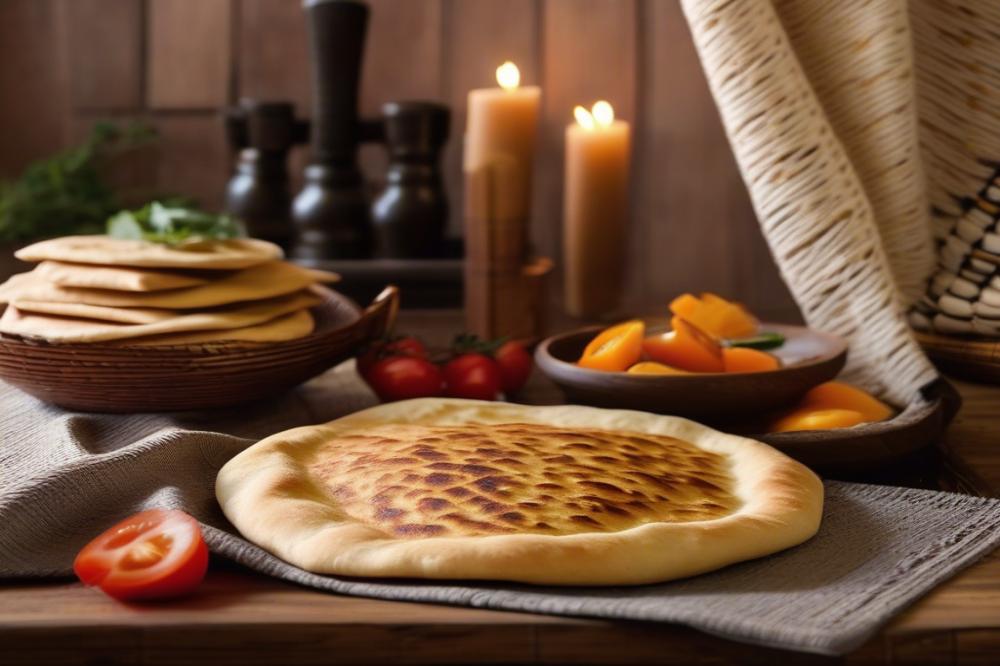The Art of Baking Aish Baladi Traditional Egyptian bread
Aish Baladi is much more than just food in Egypt. This cherished flatbread plays a vital role in daily life and meals. Known for its whole wheat composition, it serves as a staple in Egyptian cuisine. In many households, the aroma of baking bread is intertwined with memories and traditions. Each loaf tells a story that connects families and communities.
traditional bread is significant in Middle Eastern cuisine. It accompanies nearly every meal, serving both practical and symbolic purposes. For Egyptians, homemade bread is often presented with pride. Recipes passed down through generations highlight the cultural heritage cherished by many. baking techniques can vary from one family to another, but the love for this flatbread is common amongst all.
To create this beloved Egyptian bread, yeast, water, and flour blend together to form a simple but transformative mix. The dough rises, symbolizing growth and a sense of accomplishment. Once prepared, it is shaped and baked to perfection. The result is not merely sustenance; it is a communal experience that nourishes both body and spirit.
Enjoying this type of bread enhances meals with flavors that are rooted deep in history. While dining, the bread often serves as a vehicle for various dishes, allowing for a delightful fusion of tastes. Gathering around the table with fresh Aish Baladi creates bonds that enrich relationships. Thus, this Egyptian bread stands as a testament to the enduring spirit of community and tradition.
What is Aish Baladi?
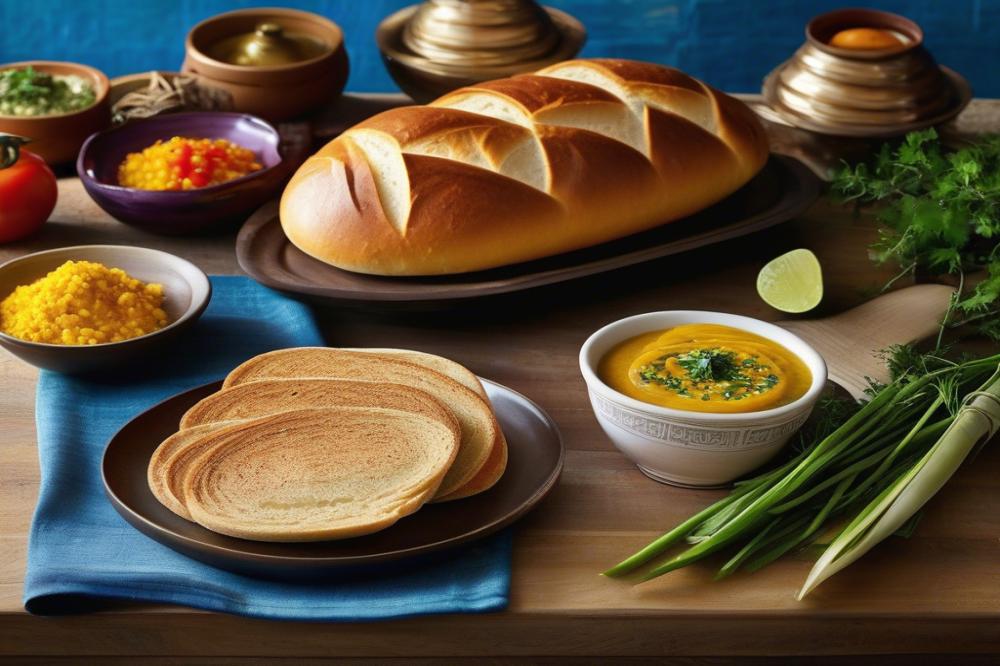
Aish Baladi is a traditional Egyptian flatbread that holds a special place in the hearts of many. This bread is made primarily from whole wheat flour, giving it a distinct flavor and texture. When baked, it puffs up, creating a pocket inside that can hold various fillings. You might find it served with a variety of dishes, enhancing the overall dining experience.
Historically, Aish Baladi has deep roots in Middle Eastern cuisine. Its origins can be traced back thousands of years, providing insight into the cultural heritage of the region. Over time, baking techniques have evolved, but the essence of this bread remains unchanged. Ancient Egyptians relied on such bread for nourishment, making it a staple in their daily diet.
In comparison to other types of bread, Aish Baladi has its own characteristics. For example, pita bread is another popular flatbread found in the Middle East; however, it is often thinner. Homemade versions of Aish Baladi are thicker and heartier, providing a satisfying meal. Unlike some other breads that rely heavily on yeast, Aish Baladi is simple and requires few ingredients—just flour, water, and salt. This simplicity and versatility make it a favorite among many.
Numerous bread recipes exist, showcasing various techniques of making this traditional bread. Some people prefer to bake it in a conventional oven, while others may choose to use a more traditional method on a stovetop or in a clay oven. Each method contributes to the unique flavor and texture of the bread, making it an exciting dish to explore in Egyptian cuisine.
Ingredients and Nutritional Information
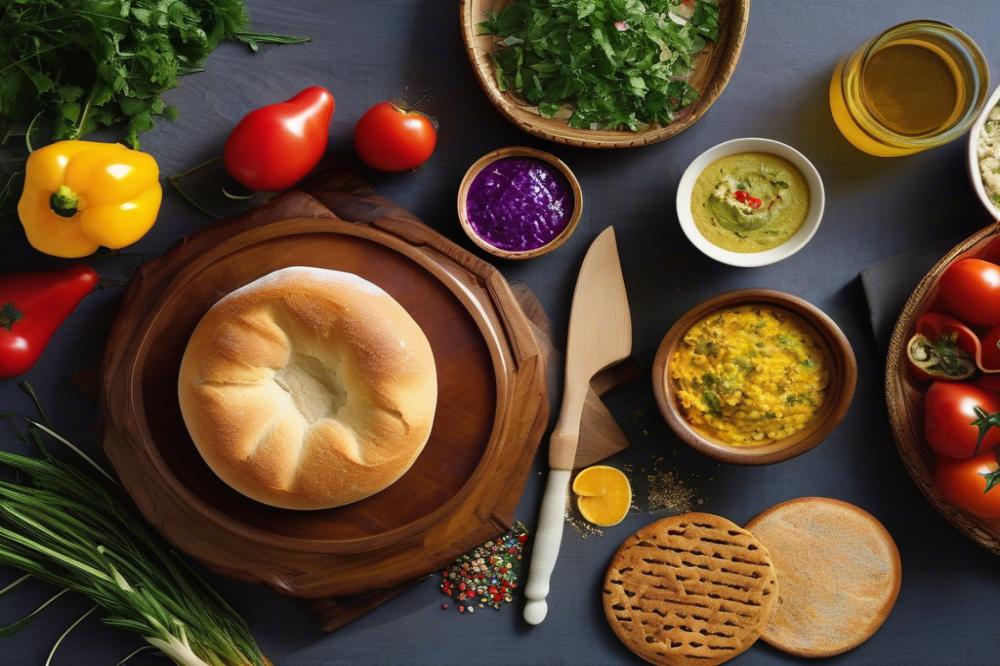
Creating Aish Baladi requires a few essential ingredients. Each component contributes to the flavor and texture of this traditional bread. Below is a precise list for crafting this beloved flatbread.
Comprehensive List of Ingredients
- Whole wheat flour: 4 cups (480g)
- Warm water: 1-1.5 cups (240-360ml)
- Active dry yeast: 1 tbsp (9g)
- Salt: 1 tsp (6g)
- Sugar: 1 tsp (4g)
- Optional: olive oil (1 tbsp)
Nutritional Information
Whole wheat flour serves as the foundation for this recipe. It is rich in dietary fiber, which aids in digestion. Additionally, this type of flour contains vitamins like B6 and minerals such as iron and magnesium. Using it can enhance the nutritional profile of your homemade bread.
Warm water is imperative for activating yeast. Proper hydration helps develop the gluten structure in the dough. Water is essential for overall health, assisting in digestion and nutrient absorption.
Adding active dry yeast is crucial for leavening. Yeast converts sugars into carbon dioxide, allowing the dough to rise. It also brings probiotics that support gut health. This natural ingredient enhances the taste of bread and fosters a unique fermentation process.
Salt is not merely for flavor; it also strengthens gluten. A small amount balances the sweetness of the sugar, while enhancing the overall flavor profile. Moderation is important, as too much salt can lead to health concerns.
Sugar may seem unnecessary, but it plays a role in the fermentation process. It helps the yeast activate and promotes browning of the crust. Natural sweetness also improves the overall taste. This small amount can contribute to better bread recipes.
Optional olive oil adds richness to the dough. It provides healthy fats that are beneficial for heart health. Moreover, olive oil can add a delightful aroma and flavor to Aish Baladi.
Understanding these ingredients helps brighten the cultural heritage of Middle Eastern cuisine. Knowing their nutritional values can enhance your baking techniques. Preparing this bread at home allows you to enjoy fresh, wholesome food while connecting with traditions of Egyptian cuisine.
Baking Instructions
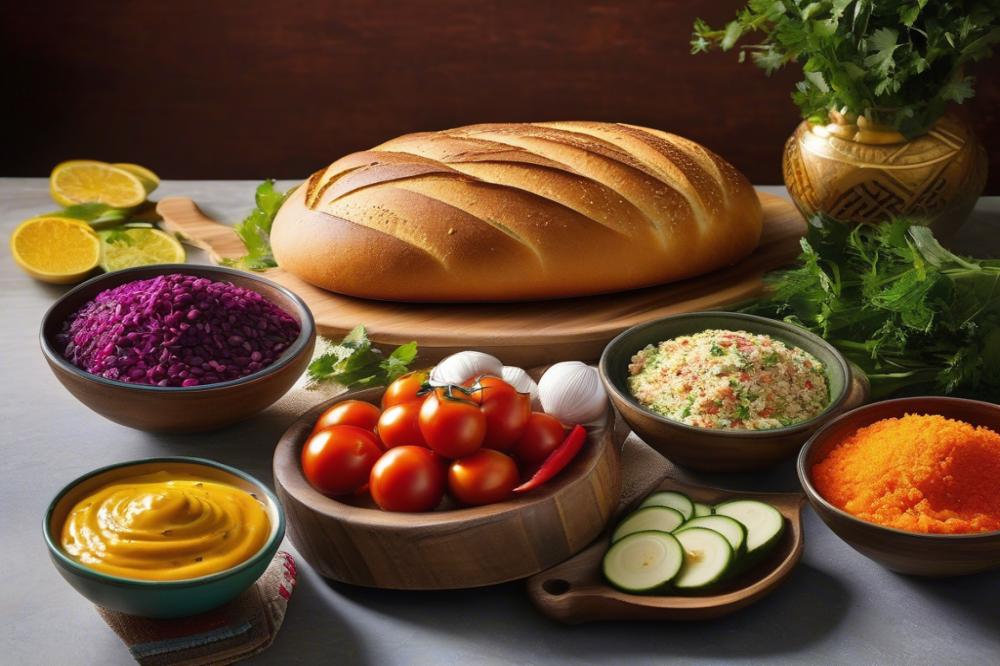
Making Aish Baladi, a traditional Egyptian bread, involves several steps that require attention to detail. Understanding the process is crucial to success.
Mixing and Kneading the Dough
Start with high-quality whole wheat flour. Measure about three cups for a standard batch. Combine this flour with a teaspoon of salt in a large mixing bowl. In a separate container, dissolve one tablespoon of yeast in warm water. Wait a few minutes for the yeast to become frothy. Gradually mix the yeast mixture into the flour. Use your hands or a spoon to combine the ingredients until they form a shaggy dough.
Once the dough starts to take shape, knead it on a clean surface. Kneading should last about 10 minutes. Aim for a smooth, elastic texture. If the dough sticks, sprinkle a little more flour. This process is important as it develops gluten, which gives the bread structure.
Fermentation Process
After kneading, place the dough in a lightly oiled bowl. Cover it with a damp cloth. Allow it to rest for 1 to 2 hours. This step lets the dough rise, giving it the airy quality associated with flatbread. The warm environment helps the yeast work effectively. Look for the dough to double in size before proceeding.
Some bakers prefer to let the dough rise slowly overnight in the refrigerator. This method enhances flavor. Patience in the fermentation stage pays off later in taste.
Shaping the Flatbreads
Once the dough has risen, gently punch it down to release excess gas. Divide it into equal portions. Roll them into balls about the size of a golf ball. Each ball should be flattened into a disc shape. Use a rolling pin or your hands, keeping the thickness around 1/4 inch. The goal is a uniform size for even cooking.
Cooking Methods
Now, let’s explore the cooking options. One popular method uses a skillet. Preheat a non-stick skillet over medium heat. When hot, place the flattened dough in the skillet. Cook each side for about 2 minutes or until golden brown. Bubbles may form, which is a sign of proper cooking.
An oven can also be used for baking. Preheat it to 500°F (260°C), ideally with a baking stone inside. Place the flatbreads directly on the hot stone or on a baking sheet. Bake for a few minutes until puffy and lightly browned. This method mimics traditional brick ovens found in Middle Eastern cuisine.
Baking Techniques for Perfect Aish Baladi
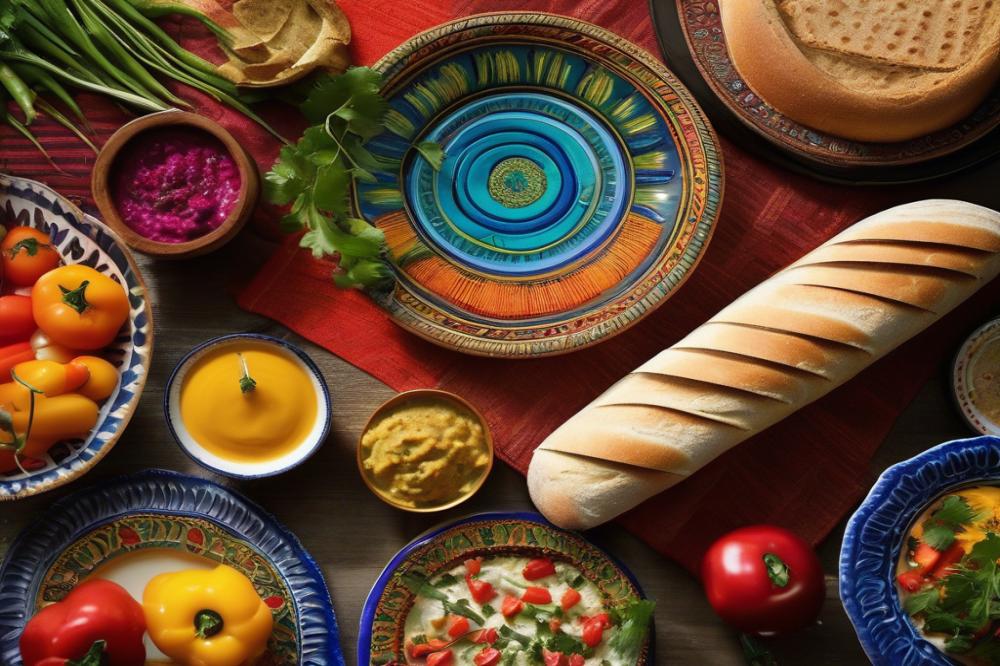
Essential Baking Tools and Equipment
Baking traditional bread requires specific tools. A flat baking stone or a heavy baking sheet is critical. These items help mimic the stone ovens used in ancient times. A rolling pin allows for the right shape and thickness. A dough scraper makes handling and cutting easier. Don’t overlook a good bowl for mixing the ingredients. It holds the dough well while it rises. Lastly, a clean kitchen towel is important to cover the dough during resting.
Achieving the Ideal Thickness and Texture
Techniques play a big role in the outcome of your flatbread. Start by mixing whole wheat flour with water, yeast, and a pinch of salt. Knead the dough until it’s smooth. Rolling it out evenly is crucial for cooking properly. Aim for a thickness of about 1/4 inch. Too thick, and it may not cook fully; too thin, and it could burn. Adjust your technique if the dough feels sticky. Dusting with flour can help. Think about the cooking temperature too. High heat creates those desirable bubbles in the bread.
Tips for Homemade Aish Baladi
Homemade bread recipes may sound daunting, but they are manageable. A common mistake is not letting the dough rest long enough. Allow it to rise for at least an hour. This resting time improves flavor and texture. If the dough doesn’t rise, check the yeast. Expired yeast won’t create the desired lift. Additionally, be aware of moisture levels. Too much water can make the dough hard to shape. Also, a dry environment can prevent the bread from rising properly. Monitor room temperature; warmer conditions are better for fermentation. Avoid rushing the cooking process. Each flatbread needs about 4 minutes on each side. Patience is key to success in baking this Egyptian cuisine staple.
Serving Suggestions and Variations
Aish Baladi offers a delightful addition to many Egyptian meals. This traditional bread pairs wonderfully with various dishes. You might find it accompanying stews, grilled meats, or even savory dips. Consider serving it warm, straight from the oven, to enhance the flavor. It can also be used to scoop up rich sauces or eaten alongside fresh salads.
Popular Accompaniments for Egyptian Meals
The use of this flatbread in Egyptian cuisine is extensive. Many enjoy it with dips like baba ghanoush or hummus. Additionally, it is fantastic paired with dishes such as ful medames, a popular fava bean stew. Roast chicken or grilled kebabs are excellent choices for a complete meal. This bread absorbs flavors beautifully, making each bite satisfying.
Exploration of Variations and Regional Differences in Recipes
Diverse regions of Egypt showcase their own takes on this classic recipe. For instance, some areas might prefer a slightly thicker texture, while others lean towards a thinner version. Variations can also include the type of flour used. Whole wheat might be favored in some households, while others may use a mix of flours to achieve different tastes and textures. Ingredients such as herbs or spices can be added to infuse the bread with local flair.
Ideas for Adapting for Modern Tastes
Modern recipes can breathe new life into traditional bread. Exploring techniques such as adding seeds can elevate the taste. Consider experimenting with flavors like garlic or rosemary to create a fusion of cultures. Using alternative flours like spelt or gluten-free options can cater to those with dietary restrictions. While adapting recipes, maintaining the essence of cultural heritage is important. Homemade versions can still carry the comfort and history of the original while appealing to contemporary preferences.
Wrapping Up the Experience of Baking Traditional Bread
Aish Baladi holds a vital place in Egyptian cuisine and cultural heritage. This bread is more than just a staple; it is a symbol of community and tradition. For many families, sharing this unique loaf around the table fosters a sense of togetherness. It accompanies nearly every meal, connecting generations through shared recipes and beloved memories.
Baking this traditional bread at home can be an enjoyable and rewarding experience. Home cooks can explore various baking techniques that have been passed down through generations. Using simple ingredients and methods, anyone can create a loaf that is not only delicious but also meaningful. Trying your hand at this craft invites you to participate in a rich culinary history that spans centuries.
Final thoughts on the journey of making bread emphasize the joy it brings. The process engages the senses; the smell of dough rising, the feel of flour dusting your hands, and the satisfaction of pulling a warm loaf from the oven all contribute to the experience. Sharing this bread with friends and family can deepen connections and create lasting memories. So why not gather your ingredients and give it a try? You may find that baking traditional bread not only fills the stomach but also nourishes the soul.

